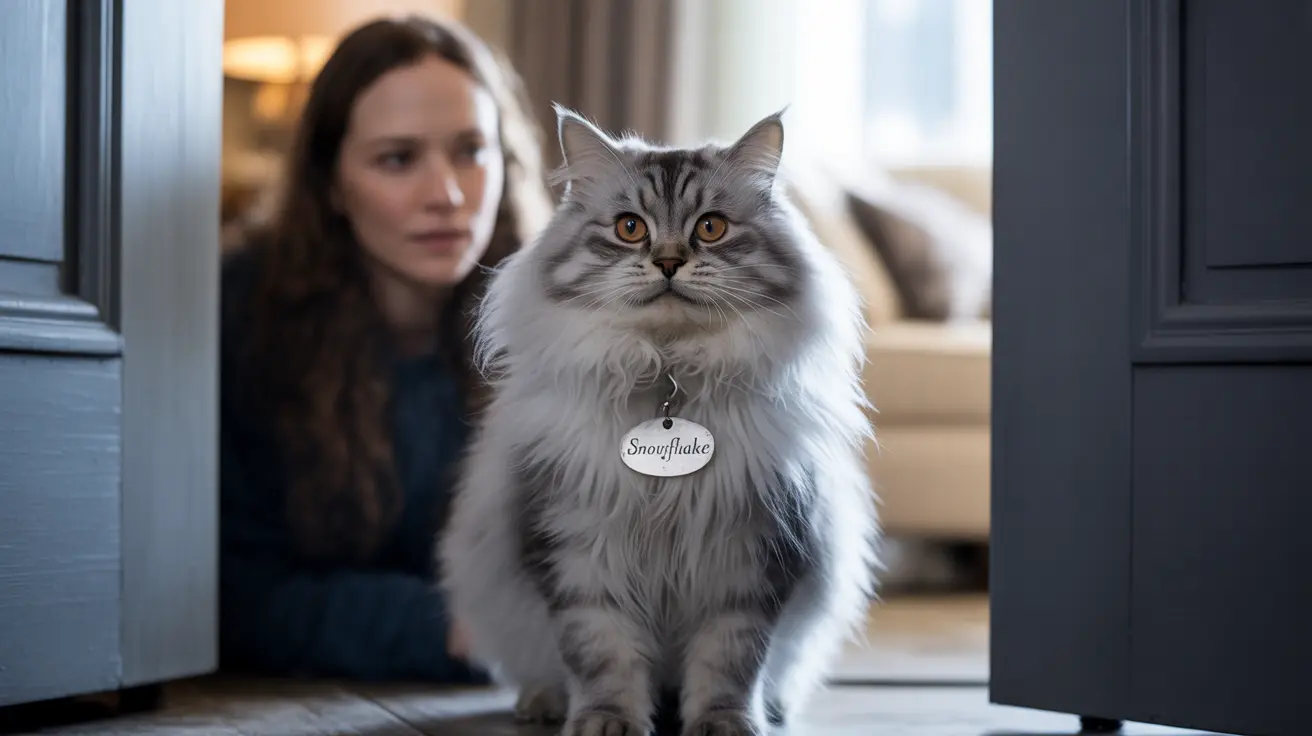Many cat owners wonder if their feline companions are actually protecting them. While cats may not guard their owners in the same obvious way dogs do, they absolutely display protective behaviors that demonstrate their dedication to keeping their human family safe. Understanding these signs can help you recognize when your cat is acting as your faithful guardian.
In this comprehensive guide, we'll explore the distinct signs that indicate your cat is in protective mode, helping you better understand your pet's behavior and strengthen your bond.
Physical Signs of a Protective Cat
Body Language Indicators
When cats feel protective, their bodies communicate their alertness and readiness to defend. The most noticeable sign is piloerection - when their fur stands on end, particularly along their spine and tail. This defensive posture makes them appear larger and more intimidating to potential threats.
- An arched back with stiff posture
- Dilated pupils focused intently on perceived threats
- Ears that swivel and track sounds before flattening against their head
- A low-held tail that may puff out and lash back and forth
Positioning and Movement
Protective cats strategically position themselves to guard their owners effectively. You might notice your cat:
- Placing themselves between you and visitors or unknown objects
- Following you from room to room (shadowing behavior)
- Sleeping in doorways or at the foot of your bed
- Maintaining a crouched stance, ready to spring into action if needed
Behavioral Signs of Protection
Vocalizations and Warnings
Cats use various sounds to warn of potential dangers and protect their territory. These include:
- Deep, threatening growls
- Sharp, warning hisses
- Urgent meowing when sensing something amiss
- Spitting when feeling particularly threatened
Vigilant Behaviors
A protective cat remains constantly aware of their environment and potential threats. They might:
- Maintain heightened alertness during unusual activities
- React quickly to unexpected sounds or movements
- Keep watch near windows or doors
- Show increased attention when strangers are present
The Science Behind Protective Behavior
Cats' protective instincts stem from both their territorial nature and the strong emotional bonds they form with their owners. Research shows that cats can detect changes in their environment and their owner's emotional state, leading them to respond protectively when they sense something is wrong.
These protective behaviors are often more pronounced in cats who have formed especially close bonds with their owners or those who have experienced previous threatening situations.
Frequently Asked Questions
What are the common signs that show my cat is protecting me?
Common protective signs include puffed-out fur, positioning themselves between you and perceived threats, following you around, alert posturing, and warning vocalizations like growling or hissing.
How can I tell if my cat's puffed-out fur means it's feeling protective or just scared?
Context is key. A protective cat will maintain their ground and face the threat, while a scared cat typically tries to retreat. Protective cats also tend to stay close to their owners rather than hide.
Why does my cat follow me around and position itself between me and strangers?
This behavior, known as shadowing, is a clear protective instinct. Your cat is monitoring your safety and positioning themselves to intercept any potential threats.
Can cats really alert their owners to danger or emergencies?
Yes, there are numerous documented cases of cats alerting their owners to fires, gas leaks, medical emergencies, and intruders through unusual vocalizations or persistent physical contact.
How do body language cues like ear position and tail movement indicate my cat's protective behavior?
Alert, forward-facing ears indicate vigilance, while flattened ears signal readiness to defend. A lashing tail with puffed fur shows agitation and warning, while a low-held tail indicates defensive posturing.
Final Thoughts
Understanding your cat's protective behaviors helps strengthen your bond and ensures you can respond appropriately to their concerns. While these guardianship behaviors are touching demonstrations of feline loyalty, remember that excessive protective behavior might require professional guidance to maintain a balanced relationship.






